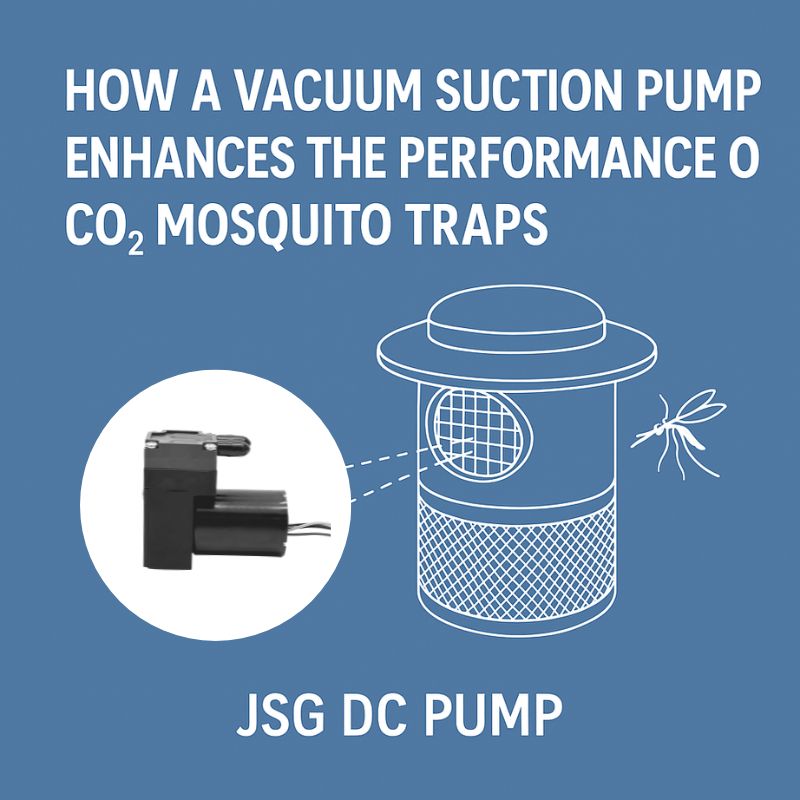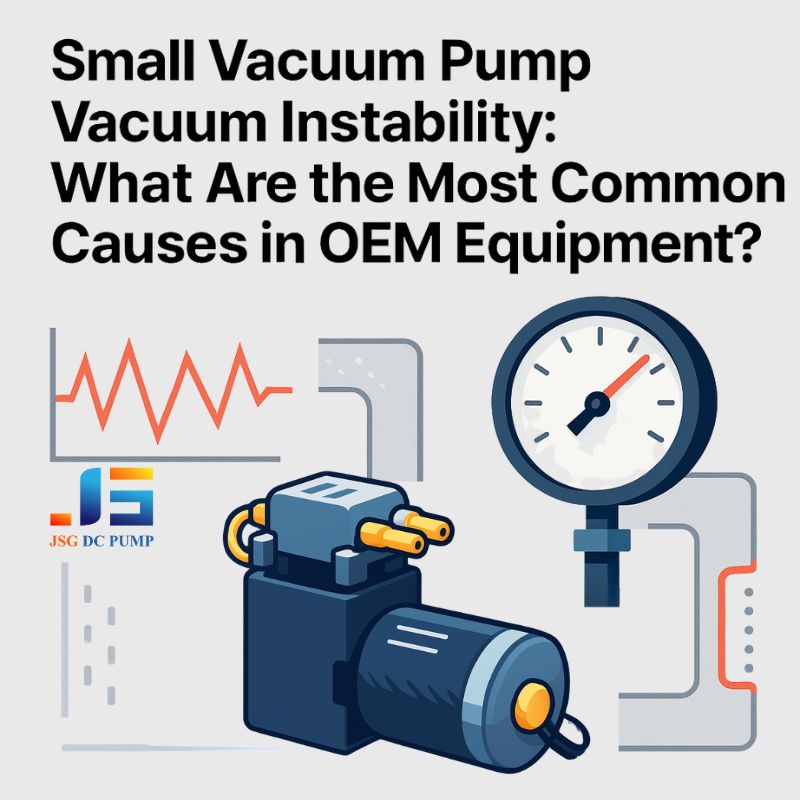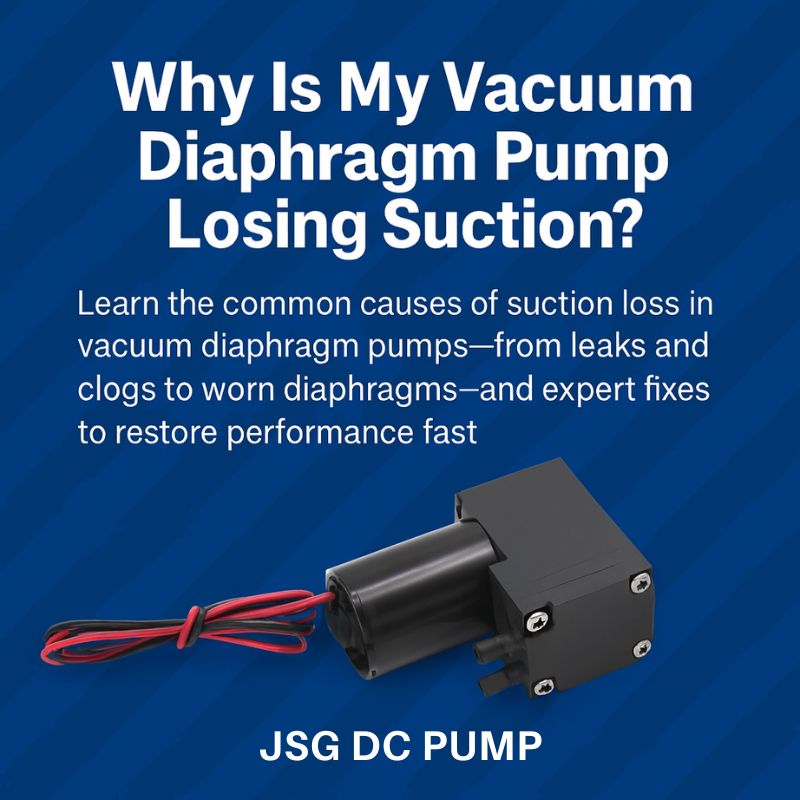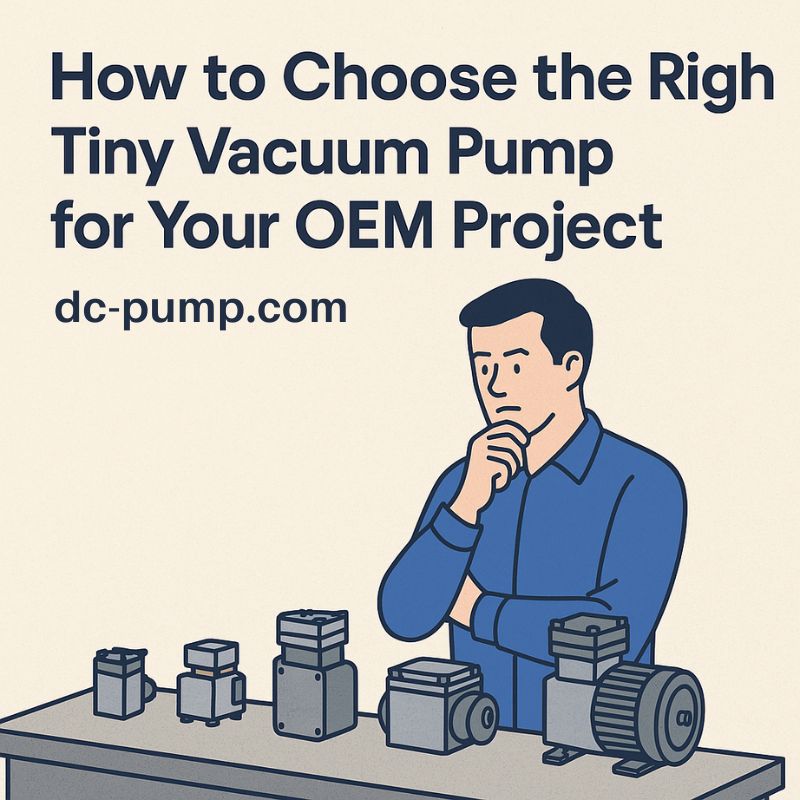Mosquitoes swarm your patio, ruining peaceful evenings and leaving everyone with itchy bites. You’ve tried candles and zappers, but they are ineffective and can be unpleasant.
A micro vacuum pump creates a powerful, inescapable suction zone near the CO₂ attractant. This instantly pulls approaching mosquitoes into a collection chamber, ensuring a high and consistent capture rate.
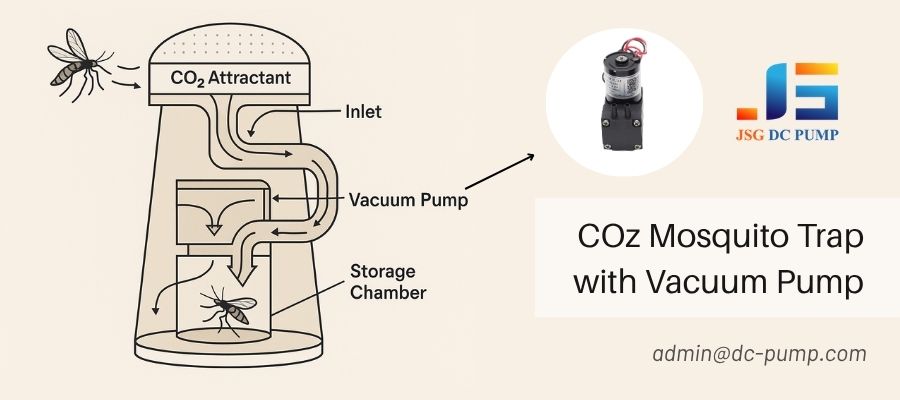
As an engineer at JSG DC PUMP, I find this application fascinating. It’s a perfect example of how our pump technology provides the critical function in a modern, effective device. The trap’s attractant module is clever—it mimics a living creature to lure mosquitoes in. But it’s the vacuum pump that does the real work. It’s the component that turns a near-miss into a definite capture. Without a reliable and powerful pump at its heart, the best attractant in the world is useless. Let’s explore the engineering that makes this system so effective.
How does a vacuum suction pump work in a CO₂ mosquito trap?
You see mosquitoes lured by the trap, but they just fly away. The device isn’t performing its main job: capturing the pests, making your investment feel wasted.
The pump works by rapidly evacuating air from a pathway connected to the trap’s inlet. This creates a low-pressure zone that generates a strong, continuous inflow of air, sucking in any nearby mosquitoes.
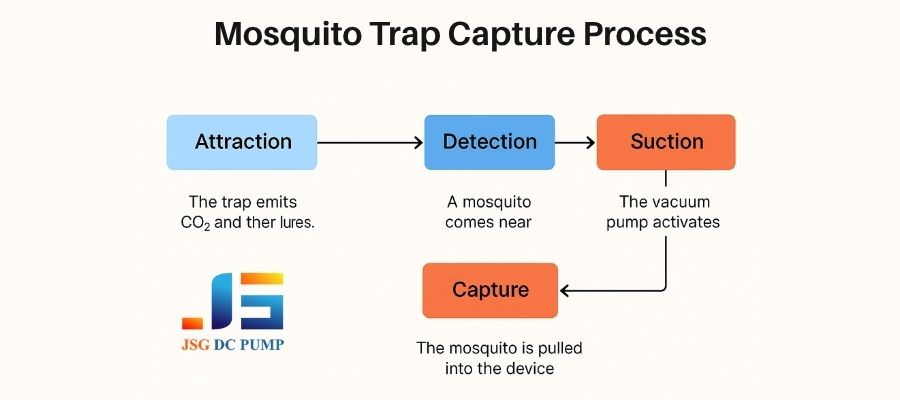
This mechanism is a highly efficient, automated process. When a mosquito investigates the attractant, the system executes a simple sequence where our pump provides the critical action. The pump turns a passive lure into an active trap. Here is a breakdown of its role in the capture process.
| Stage | System Action | Pump Function |
|---|---|---|
| 1. Attraction | The trap emits CO₂ and other lures. | The pump is on standby, ready to act. |
| 2. Detection | An onboard sensor detects the mosquito’s presence. | The pump receives an instant “start” signal from the sensor. |
| 3. Suction | A low-pressure zone is required for capture. | The pump activates, rapidly evacuating air to create powerful suction. |
| 4. Capture | The mosquito is pulled into the device. | The pump maintains constant airflow to ensure the insect reaches the collection chamber. |
Why is a high vacuum level so important for capture?
A weak trap allows mosquitoes to fight against the airflow and escape. This dramatically lowers the capture rate and makes the device feel cheap and ineffective to the end-user.
A high vacuum level of -70 to -85 kPa creates an inescapable pull. This force is stronger than the mosquito’s own flight power, ensuring that once it enters the suction zone, it cannot escape.
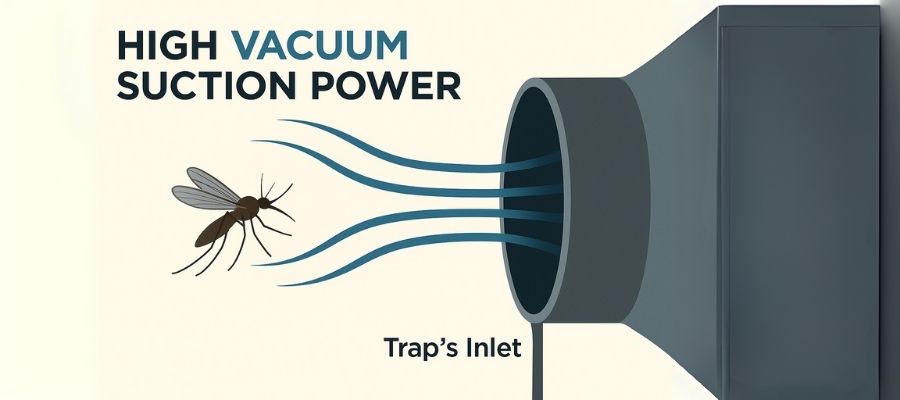
It is a matter of physics. To ensure a guaranteed capture, the force generated by the pump must overwhelm the mosquito’s ability to fly away. We have found that the -70 to -85 kPa range is the optimal specification for this task. It’s what separates a professional-grade device from a less effective alternative.
| Feature | Importance for Mosquito Capture |
|---|---|
| The Challenge | A mosquito is a surprisingly strong flier and can resist weak air currents. |
| The Solution | Create a suction force significantly stronger than the mosquito’s flight power. |
| The Specification | A vacuum level of -70 to -85 kPa creates this overwhelming force. |
| The Result | Guaranteed capture of any mosquito entering the suction zone, leading to high efficiency. |
How does airflow rate affect the capture zone?
Your trap only seems to catch mosquitoes that practically fly right into the opening. This limits its effectiveness, as it misses many insects that are just a centimeter or two away.
Airflow, measured at 5-7 L/min, determines the size and reach of the suction zone. A higher flow rate projects the capture field further, pulling in mosquitoes from a wider area.
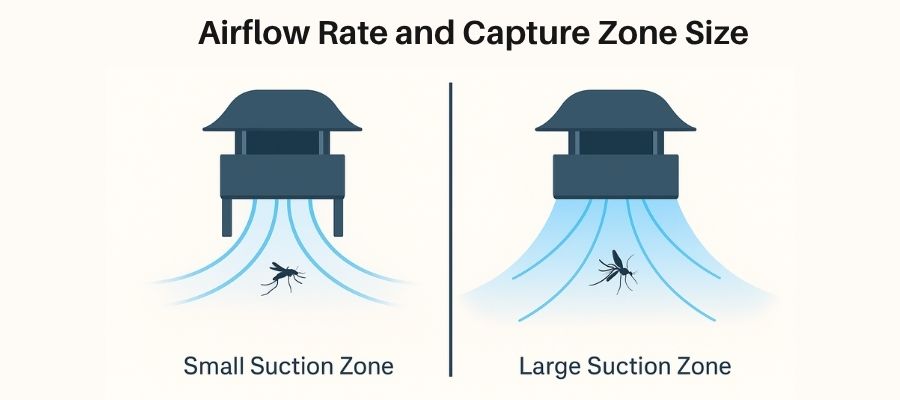
I often explain the difference between vacuum and airflow to our OEM partners with a simple analogy. If vacuum provides the strength of the pull, airflow determines the size of the capture area. Both are critical for performance. An ideal flow rate actively pulls in insects from the surrounding area, not just those that touch the inlet.
| Parameter | Analogy | Function in the Trap |
|---|---|---|
| Vacuum Level | The strength of the pull. | Ensures the mosquito cannot escape once it is in the airflow. |
| Airflow Rate | The width of the net. | Determines the size of the effective capture zone in front of the trap. |
| Optimal Spec | 5-7 L/min | Creates a wide enough suction cone to capture mosquitoes that are nearby, not just at the inlet. |
How do you design a pump for quiet backyard operation?
A mosquito trap should create a peaceful outdoor space, not ruin it. A loud, buzzing pump is annoying and makes people want to turn the device off, defeating its purpose.
A quiet pump uses a high-quality brushless DC motor and is mounted with soft rubber grommets to isolate vibrations from the device’s housing, ensuring minimal noise.
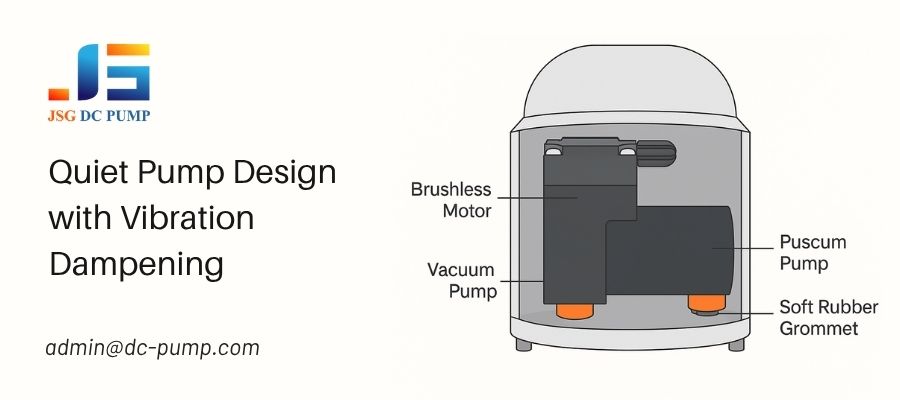
Noise is a critical factor for any consumer device, especially one used for relaxation. We tackle this problem at the source with a multi-layered design approach. The goal is to produce a low-level hum, not an intrusive mechanical noise.
| Design Feature | How It Reduces Noise |
|---|---|
| Brushless DC Motor | Operates with electronic commutation, eliminating the friction and noise of motor brushes. |
| Precision-Balanced Components | Internal parts are balanced to minimize vibration during high-speed operation. |
| Vibration-Dampening Mounts | Soft rubber grommets isolate the pump from the plastic housing, preventing the housing from amplifying sound. |
What makes a vacuum pump reliable for 24/7 operation?
Many consumer devices fail after one season of use. For a mosquito trap to be a valued tool, it must run continuously for months without any maintenance or failure.
Reliability for 24/7 operation is achieved by using a brushless motor with a lifespan of 5,000 to 10,000 hours and a durable diaphragm material that can withstand millions of cycles.
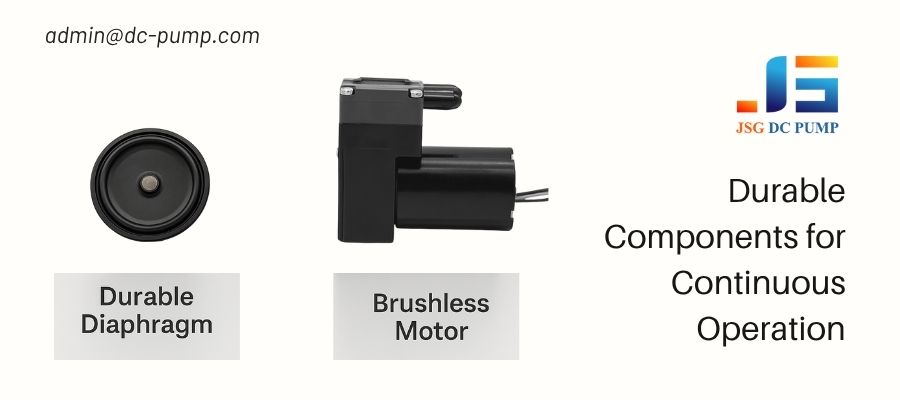
A mosquito trap is a classic “set it and forget it” appliance. Reliability is non-negotiable. End-users expect it to work tirelessly throughout the entire mosquito season. We build our pumps for this endurance by focusing on the components most subject to wear and tear.
| Component | Contribution to Reliability |
|---|---|
| Brushless Motor | With no brushes to wear out, it offers a long, maintenance-free lifespan of 5,000-10,000 hours. |
| High-Performance Diaphragm | Made from a durable elastomer that is rigorously tested to withstand millions of flex cycles without failure. |
| Efficient 12V Design | The pump runs cool, which reduces heat-related stress and degradation of internal components over time. |
How do you integrate the pump for maximum effectiveness?
You’re an OEM designing a new trap. Placing the pump correctly is critical. A poor layout can lead to weak suction, air leaks, or overheating, compromising your entire product design.
For maximum effectiveness, the pump’s inlet must be positioned for a short, direct air path from the capture zone. It requires a stable 12V power supply and enough space for ventilation.
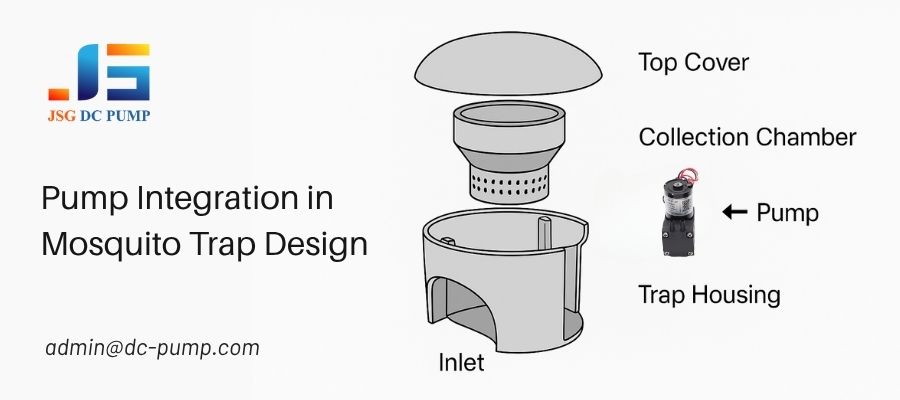
Proper integration is the final, crucial step in product design. We often consult with our partners to ensure the pump can deliver its full potential within their device. Following a few key principles prevents common performance issues.
| Integration Point | Best Practice and Reason |
|---|---|
| Pneumatic Path | Use short, wide tubing with no sharp bends between the inlet and the pump to maximize airflow and prevent suction loss. |
| Power Supply | Provide a stable, regulated 12V/24V DC source to ensure the pump operates at its specified vacuum and flow rates consistently. |
| Ventilation | Design the housing with adequate airflow around the pump motor to allow heat to dissipate, ensuring a long service life. |
Conclusion
A powerful, quiet, and reliable vacuum pump is the key technology that transforms a simple mosquito attractant into a highly effective, automated trapping system.
Contact JSG DC PUMP today at admin@dc-pump.com to integrate powerful, quiet, and reliable vacuum suction pumps into your next mosquito trap design.


